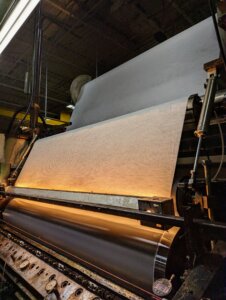The Slot Die Head Coating Machine: What to Know Ahead of Time

What do we use a slot die head coating machine for?
We use a slot die head coating machine for the slot die coating process. It applies a wide range of coatings, including hot melt, slurries, and extruded thin films onto primarily flat substrate surfaces. Really, we’re using this coating process to alter those surfaces as needed. Initially, we actually used this process for the industrial production of photographic papers. That goes all the way back to the 1950s.
What’s interesting about the slot die coating process is that we now use it on a more commercial level. In fact, we even use it when working with nanomaterials, making it more relevant than ever. Where that leaves us is that many business owners need to utilize slot-die coating equipment. However, a lot of them do not own that equipment and do not know how to use it.
As such, some of these business owners choose to work with third party manufacturers. While you may initially have your reservations about outsourcing, it comes with several different benefits. Why invest in a rotary cutting die, for example, when you could work with a third party die cutter manufacturer? Not only will that manufacturer already own an industrial die cutter—they’ll also know how to use it in the most efficient way possible. You get the results you need; you don’t need to invest in equipment, facilities, or training employees; and you can trust in the quality of the results.
These conveniences are why it might be a good idea to work with a third party, rather than handling your slot die coating needs on your own. Depending on the contract and manufacturer, you may be able to retain some input as well.
How thick is slot die coating?
The thickness of slot die coating results can vary depending on the project and procedures. Keep in mind that one of the reasons why we choose slot die coating is that we can control it. The more control you have over the process, the easier it is to predict the final results. So if you want a thicker coater, you’ll have something of a shorter rein, allowing for somewhat more variation. If you prefer something thinner, it’s important to maintain more control. The average range is about 10 nanometers to hundreds of micrometers. This is, of course, after the evaporation of the precursor solvent.
Here’s how that works. The reason why slot die coating produces such thin coatings is because we usually take the desired material and suspend it or dissolve it into a precursor solvent or slurry. You may hear manufacturers refer to that solvent as “ink”. A slot die head coating machine delivers the coating onto the surface of a substrate. Because the machine has a high aspect ratio, that layer is continuously wide. However, we can adjust the width depending on the overall dimensions of the outlet.
So—what do we need to do to change the thickness of the coating? It really depends on not only the speed of the delivery, but the rate. The great thing about slot die coating is that it allows you to pre-meter that speed and rate. As such, you don’t need to worry as much about making adjustments during the process. There isn’t as much trial and error—you’re getting more accurate results because you meter the coating ahead of time. With that being said, no machine is perfect, which is why you’ll want to work with people who know how to use it.
What’s the difference between direct coating and transfer coating?
When it comes to specifically applying adhesive to substrates, we rely on two primary forms of coating. They are direct coating and transfer coating. The differences between them are actually fairly straightforward, which makes it easier for us to make a final decision.
Direct coating involves coating the equipment directly to the substrate. It’s fairly simple, and you get the results in a more typical manner. Transfer coating is a little more complex. When we transfer coat products, we apply it to a release-coated liner. We then transfer the coating, via that liner, during the lamination process. While this takes a little longer, it folds coating into the overall lamination of the product. In that sense, it could be more efficient for some projects.
We select a coating technique based on factors like:
- adhesive’s viscosity
- adhesive’s thickness
- web material we’re coating and its surface characteristics
- coat weight accuracy we need
- solids content of the overall PSA package
Generally speaking, if you can use direct coating or transfer coating, your final decision may come down to cost. Transfer coating tends to be a little more expensive per square foot. This is because of that additional liner factor, plus more labor requirements—they simply add to the cost. However, transfer coating offers a better coating quality. If you have a bit of wiggle room and don’t need the most consistent results possible, automatic direct coating may be a good option. When you need total accuracy, you may want to spend a bit more and invest in transfer coating.
If you have further questions about any of these processes, CTI can walk you through the details. Call us at 419-924-5566 or click here. We have the expertise you need.
- << < Previous Post
- 1
- 2
- ...
- 9
- ...
- 258
- 259 Next Post > >>

